Hair loss is steadily rising as the top concern, leading to the development of various hair growth treatments. Amidst conventional medications and hair transplants, red light therapy (RLT) is a potential anti-hair fall option. It becomes overwhelming when you have to choose from a wide range of RLT tools, such as combs, caps, and helmets. Some helmets are pretty costly, and this further gives rise to questions about their affordability. So the big question is: does red light therapy really work for hair loss, or is it just another way to spend your hard-earned money?

Introduction to Red Light Therapy and Hair Loss
Red light therapy, sometimes called "cold light therapy or low-level laser therapy (LLLT) ", is a low-energy red and near-infrared light wavelength that stimulates cellular benefits in the body. In the 1960s, Hungarian doctor Endre Mester experimented with light irradiation to induce malignant tumours in mice. Accidentally, in these experiments, he found that the low-energy light had the acquired, surprising ability to promote hair growth.
Since then, much research has already been done about phototherapy's therapeutic effects, including hair growth stimulation through the therapeutic action of RLT. In 2007, the FDA cleared a 655 nm wavelength low-level laser therapy (LLLT) device for treating androgenetic alopecia (AGA), or male/female pattern baldness. In 2011, the FDA cleared additional RLT devices using 678 nm and 650 nm light for the same indication. This official recognition of the FDA truly underlines the effectiveness and safety of RLT as a realistic treatment modality against AGA, thereby restoring hope for those in need of non-invasive remedies against hair loss.
Why Choose RLT for Hair Restoration?
The RLT penetrates through the scalp and stimulates the cells to increase their activity level not only in the follicles but also below the surface. This increases mitochondrial activity and, in conjunction with ATP, grows hair healthily and circulates throughout the scalp. RLT also increases the blood flow to the scalp, feeding the follicles with just the right nutrients and oxygen for growth. RLT is a user-friendly hair restoration fix that's been proven to have few, if any, side effects.
Key Benefits of RLT in Treating Hair Loss
The broad range of benefits associated with red light therapy in stimulating hair growth and treating hair loss include:
- Improved blood circulation: RLT enhances blood flow in the scalp microcirculation to ensure effective delivery of nutrients and oxygen to the hair follicles-an important factor in healthy hair growth.
- Anti-inflammatory: RLT reduces inflammation in the scalp, creating an environment in which hair follicles can be healthy and support their regeneration and growth.
- Increased Cellular Energy: RLT stimulates the production of ATP within cells and enhances RNA and protein synthesis in tissue cells, which allows hair to regrow, increase density, and improve its quality.
- Growth Factor Stimulation: RLT stimulates the growth factors and cytokines required to initiate dormant hair follicles and extend the anagen phase of the hair growth cycle. It directly acts on keratinocyte stem cells and dermal papillary cells, which in turn induces the growth phase of hair follicles and increases hair density.
- Hormonal Function Regulation: RLT supports and regulates the functional capacity of the thyroid and adrenal glands, combating hair loss through hormonal imbalance.
Practical Applications: From Clinics to Home
RLT is such a versatile device for home and clinic use and offers safe, effective, and available means for preventing and treating hair loss.
Clinical Settings:
- Dermatology Clinics: Dermatologists and hair restoration specialists incorporate RLT in their treatment plans for patients who are experiencing hair loss. Equipment in dermatology clinics is generally top-of-the-line and optimized for performance.
- Hair Restoration Centers: Specialized clinics that can offer comprehensive regimens of treatment that may include red-light therapy, which can complement platelet-rich plasma therapy for better results.
At-Home Treatment
- Personal RLT Devices: These in-home-sized RLT devices, like laser caps or handheld combs, allow the user to conveniently incorporate RLT into their normal at-home personal care practice.
- Preventative Care: People at risk of hereditary hair loss can also take up RLT at-home sessions to prevent the degradation of scalp health and promote proactive stimulation of the hair growth process.
- Reactive Treatments: These home-based RLT treatments are convenient, non-invasive, and time-saving for people who are already losing hair. Treatments in patients can be received according to schedules prescribed for treating hair follicles for hair growth stimulation.

Implementing RLT in Hair Loss Protocols
Integration with other hair care regimens
Include RLT sessions in your existing hair care routine, and schedule the treatments when they are convenient for you.
Use the RLT devices with your favourite shampoos, conditioners, and hair serums to enhance the effects of the products and enhance overall hair health.
Keep up with RLT treatments; maintain a regular schedule and follow the recommended guidelines for frequency and duration.
Professional Consultation
Before beginning RLT for hair loss, discuss your needs with your healthcare provider or hair professional and collaborate with them to come up with a custom treatment plan that will work best for you. Such professionals can help with personalized recommendations on hair type, scalp condition, or hair loss severity to ensure the best possible results and safety.
Real-life Success Stories
Bestqool Red Light Therapy Users Testimonials
People using RLT have seen clear improvements and feel better about their hair, especially when following professional advice as part of their hair care routine.
"After being afflicted with visible thinning of hair, Sarah desperately needed a non-invasive solution. After continuing with regular at-home treatments for a few months, Sarah began to note dramatic improvements in the density and texture of her hair, which restored her confidence and satisfaction with her appearance."
"Trying to get back his hair for years, which happened to be in vain, John resorted to getting help from professional hair restoration. After RLT sessions with minoxidil, John realized quite a lot of hair in places that used to be thin, making his hair fuller and thicker, which boosted his confidence."
Conclusion
Red light therapy has so much potential in hair restoration. Red light therapy has gained certifications from regulatory bodies such as the US FDA, but it is usually prescribed as an adjunct to other methods. RLT has all the potential to be groundbreaking in hair restoration growth, which is gradually being realized as further research advances in the area. More research needs to be done to understand its mechanisms and efficacy for hair regrowth, but RLT is showing promise as a new treatment option for hair loss.
References
[1] Lanzafame, R. J., Blanche, R. R., Bodian, A. B., Chiacchierini, R. P., Fernandez-Obregon, A., & Kazmirek, E. R. (2013). The growth of human scalp hair mediated by visible red light laser and LED sources in males. Lasers in surgery and medicine, 45(8), 487–495. https://doi.org/10.1002/lsm.22173
[2] Yang, K., Tang, Y., Ma, Y., Liu, Q., Huang, Y., Zhang, Y., Shi, X., Zhang, L., Zhang, Y., Wang, J., Zhu, Y., Liu, W., Tan, Y., Lin, J., & Wu, W. (2021). Hair Growth Promoting Effects of 650 nm Red Light Stimulation on Human Hair Follicles and Study of Its Mechanisms via RNA Sequencing and Transcriptome Analysis. Annals of dermatology, 33(6), 553–561. https://doi.org/10.5021/ad.2021.33.6.553
[3] Pillai, J. K., & Mysore, V. (2021). Role of Low-Level Light Therapy (LLLT) in Androgenetic Alopecia. Journal of cutaneous and aesthetic surgery, 14(4), 385–391. https://doi.org/10.4103/JCAS.JCAS_218_20
Read More
- How Can Red Light Therapy Affects Your Sleep? – BESTQOOL
- Red Light Therapy | Unlock Wellness & Beauty Benefits – BESTQOOL
- Red Light Therapy Dosing Guide – BESTQOOL
- How To Create A Sleeping Routine For Newborns – BESTQOOL
- Red Light Therapy Benefits | Skin & Pain Relief at Home – BESTQOOL
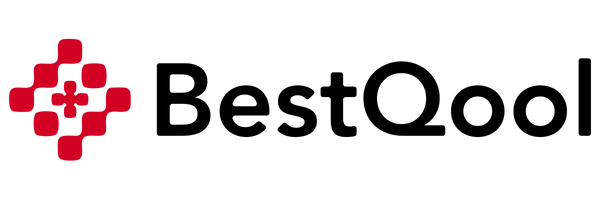


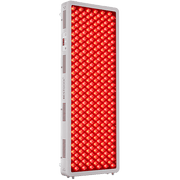








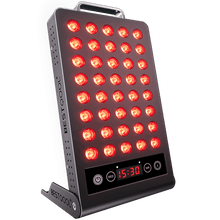
 Small
Small
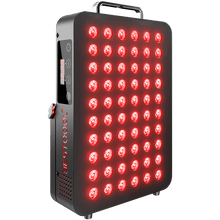
 Moderate
Moderate
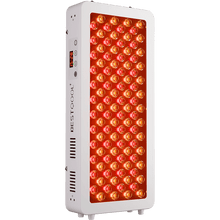
 Moderate
Moderate
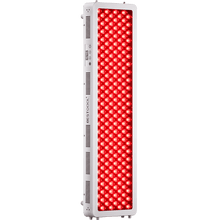
 Moderate
Moderate
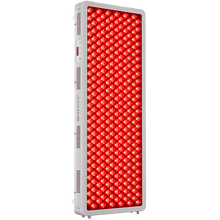
 Full
Full



